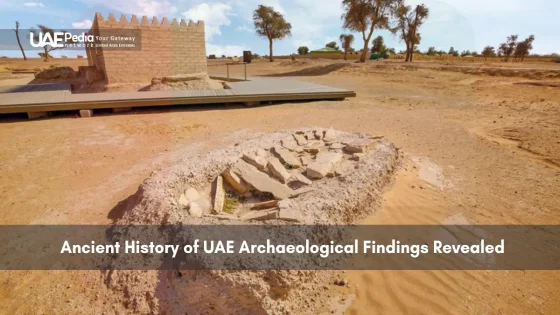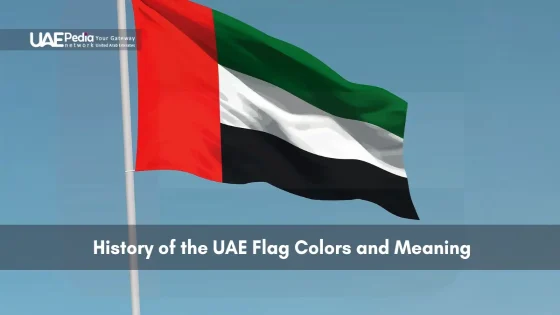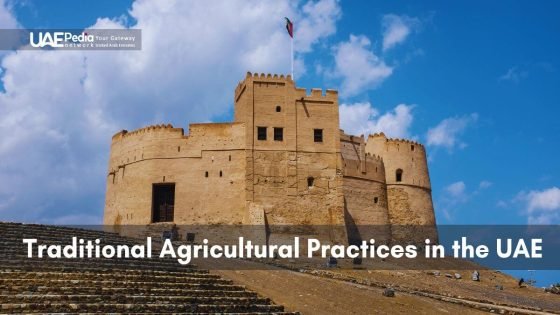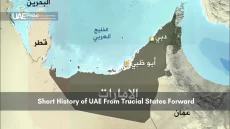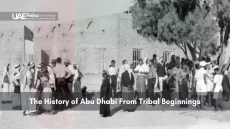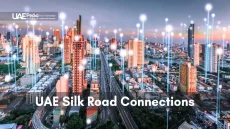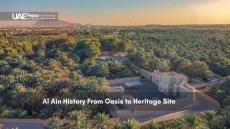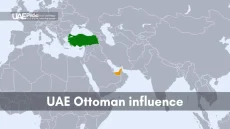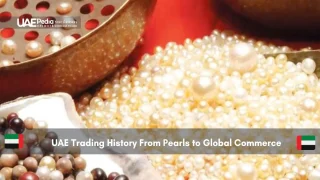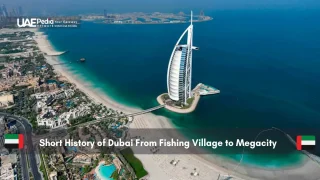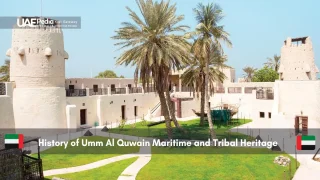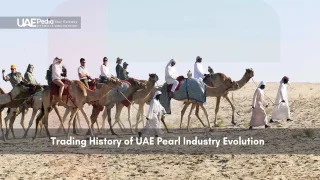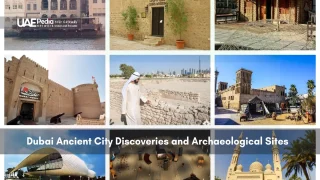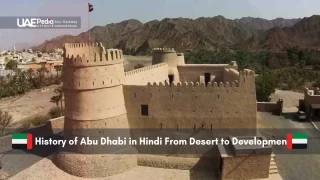What if we told you the United Arab Emirates has hosted bustling communities for over 125,000 years? Beneath its gleaming skyscrapers lies a tapestry of forgotten empires, nomadic tribes, and Bronze Age traders. Recent digs reveal copper-smelting sites and stone tools older than Egypt’s pyramids—proof this desert landscape has always been a crossroads of civilizations.
Take the Magan civilization, for instance. These early innovators forged trade routes stretching from Oman to Mesopotamia, leaving behind pottery and jewelry in Sharjah’s dunes. In Abu Dhabi, a 4,000-year-old tomb cluster hints at complex rituals and social networks. Each discovery peels back another layer, showing how generations adapted to this harsh yet resource-rich environment.
Why does this matter today? These findings rewrite the region’s role in global history—not just as a modern hub, but as a cradle of innovation. From pearl divers to frankincense merchants, the Arab Emirates thrived through resilience and connection. Let’s unpack how yesterday’s footprints shaped today’s cultural DNA.
Key Takeaways
- The UAE’s soil holds evidence of human activity spanning 125+ millennia, including early trade networks with Mesopotamia.
- Discoveries like Magan-era artifacts and Bronze Age tombs highlight the region’s historical significance beyond oil and modernity.
Prehistoric Foundations and Early Settlements
Imagine wandering the Arabian Peninsula 125,000 years ago—your footsteps echoing those of the first hunter-gatherers. This rugged terrain wasn’t just a desert back then. Lush grasslands and freshwater sources made it a survival hotspot for early people. Archaeologists have pieced together their story through stone tools and campfire remnants.
Stone Age Survival Strategies
At Jebel Faya in Sharjah, hand-axes dating back 130,000 years reveal how Paleolithic groups adapted. These weren’t crude tools—they were precision-crafted for skinning animals and cutting plants. Fast-forward to the Neolithic era, and we find grinding stones in Ras Al Khaimah. This shift from roaming to semi-settled life marks a turning point.
Traces of Transition
Abu Dhabi’s Marawah Island holds clues too. Fire pits and fish bones show how communities began settling near coasts 8,000 years ago. They traded shellfish for tools with inland groups—early networking at work! These connections paved the way for later Bronze Age villages.
What’s striking? The region wasn’t just a stopover. It nurtured innovation—like stone-lined wells in Umm Al Quwain that turned arid zones into livable spaces. Each discovery rewrites assumptions about how early people shaped this country’s roots.
Bronze Age Brilliance: Umm Al Nar and Wadi Suq Cultures
Step into a landscape where stone whispers of forgotten empires. Around 2600 BCE, the area now called Abu Dhabi buzzed with Bronze Age ingenuity. Picture circular tombs rising like stone crowns from the earth—their limestone blocks fitted tighter than puzzle pieces.
Umm Al Nar: Monumental Tombs and Settlement Discoveries
On Umm Al Nar Island, archaeologists uncovered tombs that redefined the emirate’s story. These 4,500-year-old structures weren’t just burial sites—they were community projects. Each ring-shaped marvel held hundreds of remains, suggesting generations honored their ancestors here.
Trade goods found inside tell another tale. Carnelian beads from the Indus Valley. Copper tools bound for Mesopotamia. This area wasn’t just surviving—it thrived as a crossroads. “The craftsmanship rivals anything from that century,” notes one researcher studying the precise stonework.
Wadi Suq: Cultural Transitions and Pottery Artifacts
By 2000 BCE, a shift emerged. Wadi Suq communities began crafting slender-necked jars and bowls with geometric patterns. These pottery styles—found at dig sites across the emirates—hint at changing rituals. Graves grew simpler, but artistry flourished.
What changed? Climate shifts may have driven settlements inland. Yet trade continued shaping designs. Look closely at a Wadi Suq vase, and you’ll spot motifs borrowed from distant shores—proof that even 4,000 years ago, this area knew how to blend tradition with outside influences.
Iron Age Advancements: Fortified Settlements and Trade
Picture this: flames flicker in a desert forge as craftsmen mold bronze into serpent-shaped pendants. Around 1,200 BCE, communities across the region built stone fortresses and mastered metalwork that still dazzles archaeologists today. This era saw coastal villages evolve into strategic hubs connecting land and sea routes.
Saruq Al Hadid: A Metallurgical Marvel and Its Legacy
Deep in Dubai’s dunes lies Saruq Al Hadid—a 3,000-year-old factory floor. Excavators found arrowheads, axes, and jewelry here, all forged in furnaces reaching 1,200°C. “This wasn’t just metalwork—it was alchemy,” says one researcher, noting how artisans blended copper and tin for superior bronze.
| Site | Innovation | Artifact |
|---|---|---|
| Saruq Al Hadid | Bronze alloy production | Serpent pendants |
| Ras Al Khaimah | Falaj irrigation | Pottery kilns |
| Umm Al Quwain | Coastal trade networks | Fishhooks |
Innovative Irrigation and Evolving Settlement Structures
Inland, communities dug falaj channels to redirect groundwater—think of them as ancient aqueducts. These systems turned Ras Al Khaimah’s valleys into farmland. Villages grew fortified walls, while pottery designs shifted from plain bowls to intricate geometric patterns.
Coastal life thrived too. At Umm Al Quwain, fishers used weighted nets—a technique still seen today. This blend of fishing traditions and new metallurgy created a society ready for the trucial states era. Every rusted spearhead and painted vase whispers: innovation wasn’t optional here—it was survival.
“The Iron Age here wasn’t about conquest. It was about clever adaptation—turning sand into steel, saltwater into trade routes.”
Islamic Era: The Advent of a New Cultural Identity
Ever wondered how faith reshaped desert dunes into thriving ports? The 7th century brought more than caravans—it wove a new social fabric across the seven emirates. Coastal towns like Julfar buzzed with pearl divers and shipbuilders, while inland oases became hubs for scholars and traders. This wasn’t just a religious shift—it was a cultural revolution.
From Ridda Wars to Maritime Prosperity
The Ridda Wars solidified Islam’s foothold here, transforming tribal alliances into a unified force. Bronze Age trading habits evolved: frankincense routes gave way to bustling ports shipping dates, pearls, and textiles to India and beyond. At Jebel Hafeet, archaeologists found 1,300-year-old tombs—their inscriptions blending Quranic verses with local poetry.
Dubai’s early rulers played chessmaster with trade winds. They built souqs where Bedouin weavers haggled with Persian merchants, creating an economic blueprint still visible today. “Islam didn’t erase traditions here,” notes a Sharjah historian. “It layered them like sandstorms shaping dunes—same earth, new contours.”
By the 10th century, the seven emirates pulsed as one network. Mosques doubled as community centers, their minarets guiding ships into harbors. Families who once traded bronze tools now exported pearls, their dhows bearing sails stitched with verses. This fusion of faith and commerce became the region’s heartbeat—a rhythm still felt in bustling markets and Friday prayers.
Understanding the ancient history of uae
How did desert tribes evolve into a trading powerhouse? For centuries, the coast served as both battleground and meeting point. Pearls from the Gulf, spices from India, and frankincense from Oman flowed through ports like Julfar. But this golden era wasn’t just about goods—it shaped a mindset of shared survival.
Chronicles of Trade, Conflict, and Cultural Unity
Local clans often clashed over fishing rights and oasis control. Yet when Portuguese ships threatened the coast in the 16th century, rival leaders struck deals. The 1820 General Maritime Treaty—brokered with British help—became a blueprint. It protected trade routes while letting tribes govern inland. Sound familiar? This balance of independence and cooperation mirrors today’s federation model.
| Treaty/Event | Impact | Key Players |
|---|---|---|
| General Maritime Treaty (1820) | Reduced piracy, boosted pearl exports | Coastal sheikhdoms, Britain |
| Perpetual Maritime Truce (1853) | Formalized conflict resolution | Abu Dhabi, Dubai, Umm Al Quwain |
| Exclusive Agreements (1892) | Strengthened regional security | Seven emirates, British Empire |
Caravans didn’t just carry dates and textiles—they exchanged ideas. Shared dialects, wedding customs, and falconry traditions emerged across tribes. As historical records show, these bonds laid groundwork for 1971’s unification. Conflicts happened, but cooperation always reset the scales.
Next time you stroll Dubai’s souqs, remember: those haggling techniques? Passed down from merchants who mastered the art of deal-making under shifting sands. The past isn’t gone here—it’s the foundation.
European Encounters and Colonial Influences on UAE
What do Dubai’s skyscrapers have in common with 16th-century forts? Both mark turning points where global power reshaped the city’s destiny. When Portuguese caravels arrived in 1507, they didn’t just bring cannons—they ignited a clash of ambitions. Coastal hubs like Julfar and Ras Al Khaimah became chess pieces in a game spanning oceans.
Impact of Portuguese, Dutch, and British Maritime Powers
The Portuguese built watchtowers along the Oman coast, but their grip slipped within a time. By 1650, Omani forces reclaimed key ports. Next came the Dutch, sniffing out pearl profits. Their ledgers from 1666 note trades of silver for Gulf gems—deals struck under palm-frond shades, not fort walls.
Britain’s 1820 maritime treaty changed the rules. Tribal leaders traded pirate raids for protected trade routes. “The treaties weren’t surrender,” explains a historian at uaepedia.net. “They were recalculations—like shifting a dhow’s sail to catch new winds.”
Colonial footprints linger in unexpected places. British maps redrew fishing zones, while Dutch sketches detail tombs near Ras Al Khaimah. Yet through every age, local traditions held firm. Pearl divers still sang work chants. Date palms still shaded mud-brick homes. Even as European plans reshaped ports, communities kept their rhythms.
“Foreign flags came and went like tides. What remained? The grit to adapt without losing your soul.”
Today’s skyline reflects that balance—glass towers rooted in bedrock of resilience. Next time you stroll Dubai Creek, listen closely. The clatter of cargo blends with echoes of dhows that outlasted empires.
Modern Archaeological Discoveries and Their Impact
Picture archaeologists swapping brushes for drones—welcome to 21st-century digs in the Emirates. Teams now use LiDAR scanners to map buried settlements and AI to decode pottery fragments. These aren’t just tools; they’re time machines revealing how past innovations shape today’s climate-smart solutions.
Recent Excavations and Technological Innovations
In Al Ain, thermal imaging uncovered 3,000-year-old falaj irrigation channels—ancestors of today’s water-saving systems. “Our ancestors turned deserts into orchards,” says Dr. Noura Al Mazrouei, leading a UAE-German team. “Now we’re adapting their wisdom for modern agriculture.”
| Technology | Application | Site |
|---|---|---|
| 3D Photogrammetry | Reconstructing Bronze Age tombs | Umm Al Quwain |
| Isotope Analysis | Tracing pearl trade routes | Julfar Coast |
| AI Pattern Recognition | Deciphering Iron Age symbols | Saruq Al Hadid |
Discoveries now hit closer to home. In Dubai Hills, construction crews found a 4,000-year-old trading post beneath a future neighborhood. Drones documented the site within hours, proving you can honor the past while building tomorrow.
“Every scan reveals connections—how Iron Age metallurgy inspires modern alloys, or how ancient irrigation mirrors our climate resilience projects.”
Global partnerships amplify these breakthroughs. French labs helped restore Sharjah’s Mleiha fortress using nano-materials, while Emirati students prototype VR tours of sites they now call home. It’s not just about unearthing artifacts—it’s about reigniting pride in landscapes where history and innovation share the same soil.
Legacy of Maritime Trade and Cultural Exchange
Ever sailed through time? The Persian Gulf once bristled with dhows carrying pearls, spices, and stories. These waters didn’t just connect ports—they stitched together identities. Today’s skylines may gleam, but the emirate Abu Dhabi’s DNA still pulses with saltwater rhythms.
Pearling, Ancient Trade Routes, and Global Connections
Pearl divers once plunged 30 meters on a single breath, their harvests funding entire villages. By the 19th century, Gulf pearls adorned Parisian necklaces and Mumbai markets. Sheikh Zayed bin Sultan, later the ruler Abu Dhabi, famously negotiated fair prices for divers—a move that stabilized the trade during turbulent times.
Port cities like Julfar became melting pots. Indian textiles met Omani frankincense here, while merchants from Basra bartered under palm-frond shades. These exchanges birthed unique dialects and dishes still savored today. “Trade wasn’t transactional here,” notes a Dubai historian. “It was kinship forged through shared risk and reward.”
- Economic Blueprint: Pearling revenue funded early schools and mosques, shaping social infrastructure
- Diplomatic Threads: Treaties brokered by leaders like Zayed bin Sultan turned rival sheikhdoms into trade allies
- Cultural Alchemy: Sailors brought back not just goods, but architectural styles and governance ideas
Modern policies echo this legacy. Abu Dhabi’s Saadiyat Island, a cultural hub, mirrors old trading posts where art and commerce mingled. The emirate Abu Dhabi now blends heritage preservation with global partnerships—much like its ancestors balanced pearl beds with foreign markets.
“Our grandfathers read stars to navigate. Today, we chart digital trade routes—same vision, new tools.”
From Sheikh Zayed bin Sultan’s fair-trade reforms to AI-powered customs systems, the Gulf’s waters remain a stage for reinvention. Next time you spot a dhow silhouette against Dubai’s skyline, remember: that’s not nostalgia. It’s proof that tides change, but true legacy anchors deep.
Celebrating a Legacy: Lessons from UAE’s Timeless Heritage
Walk through Dubai’s spice-scented souqs, and you’re stepping into a story 5,000 years in the making. From Wadi Suq pottery artisans to Iron Age metallurgists, this land thrived on reinvention. The circular tombs of Umm Nar whisper tales of community, while Saruq Al Hadid’s bronze workshops prove innovation isn’t new here—it’s ancestral.
Visionaries like Sheikh Zayed bin Sultan understood this legacy. His efforts to preserve sites like Umm Nar weren’t just about stones—they honored a mindset. Adapt. Connect. Build. Those principles fueled pearl divers and frankincense traders, now mirrored in skyscrapers and solar farms.
Three lessons echo across the dunes:
Resilience – turning arid lands into trade hubs.
Unity – blending traditions from Bedouin camps to global ports.
Vision – crafting tomorrow’s solutions with yesterday’s wisdom.
Want to feel this heartbeat? Visit Al Ain’s Iron Age falaj channels or Julfar’s pearling ruins. These aren’t relics—they’re roadmaps. Every pottery shard and weathered fort invites us to ask: How will our choices shape the next chapter?
The UAE’s story isn’t locked in museums. It lives in souqs haggled over coffee, dunes crossed by electric SUVs, and futures built on foundations older than pyramids. Here, heritage isn’t preserved—it’s practiced.
Look to Jebel Hafeet’s 5,000-year-old beehive tombs and stone tools found near Al Ain—proof that nomadic groups thrived here during the Neolithic era. Coastal shell middens and fishing villages like those on Marawah Island also reveal how early communities adapted to the Gulf’s resources.
These circular Bronze Age graves, packed with painted pottery and copper artifacts, show sophisticated craftsmanship and trade links to Mesopotamia and Indus Valley cities. Discovered near Abu Dhabi, they’re a window into how coastal settlements became hubs for regional exchange.
Ingenious falaj irrigation systems—still used in Al Ain’s oases—channeled groundwater to date palms and crops. Sites like Saruq Al Hadid near Dubai also show metallurgy skills, with iron tools and snake-shaped ritual objects hinting at spiritual practices tied to survival.
For over 7,000 years, divers risked everything to harvest pearls from the Gulf’s beds—funding trade from Rome to India. You can still see this legacy in Sharjah’s maritime museums and the restored pearling villages on Sir Bani Yas Island.
Portuguese forts like Khor Fakkan’s 16th-century ruins mark early attempts to control trade routes. Later, British treaties with Trucial States leaders (like Sheikh Zayed bin Sultan Al Nahyan’s grandfather) set the stage for the UAE’s 1971 federation—blending local governance with global diplomacy.
Drones and 3D mapping revealed hidden Iron Age camps in Liwa’s dunes, while Dubai’s Saruq Al Hadid site—dubbed the “Iron Age Louvre”—yielded gold jewelry and a 3,000-year-old gold-plated ring. Each find rewrites chapters of the region’s story!
